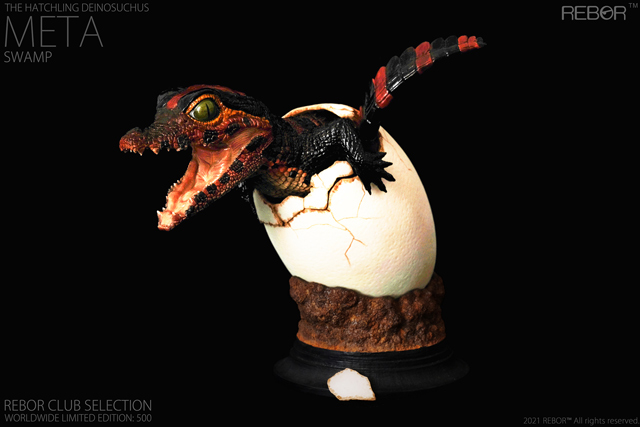A Comment on the Diet of Deinosuchus
Last week we published an article on some of the latest research into crocodilian coprolite that had been ascribed to the large Eusuchian crocodile, Deinosuchus hatcheri. The study into the fossilised poo was complemented by research into bite marks found on large bones from the same rock strata. From this work, the scientists who carried out this study concluded that this large, ancient reptile may have inhabited estuarine environments and predated mainly on sea turtles, although it was capable of tackling unwary dinosaurs.
Deinosuchus Diet
This study was undertaken by Professor David Schwimmer of Columbus State University and one of his students Samantha Harrell. Their interpretation of the data led to the conclusion that this prehistoric crocodile may have fed mainly on turtles and that it lived in sandy, estuarine environments. Coprolite analysis can provide a great deal of information relating to the diet and environment in which an animal lived. For example, the particles of sand found within the fossilised crocodile dung provides evidence of the habitat and fragments of undigested bone and other matter can indicate elements of the diet. The assumption is that the coprolite found is that from Deinosuchus.
It is quite likely that this is the case, the shape, size and consistency of the coprolite are all good indicators, as is the fact that no other genus of large crocodile is known from the specific rock formation from which the fossils were extracted.
However, the implications regarding diet are somewhat more difficult to interpret.
To read the article on Deinosuchus coprolite: Ancient Crocodile Poop Provides Evidence of Deinosuchus Diet.
Ancient sea turtles may have congregated in large numbers as they headed towards their traditional nesting beaches, just as modern extant species do today. An opportunist predator such as Deinosuchus may have taken advantage of this and each year migrated to the same location in order to exploit this food source. Adult female turtles struggling back to the sea after laying their eggs may have been very vulnerable to attack.
A Deinosuchus would have easily captured and overpowered such an animal that would already have been exhausted from their exertions as they lumbered up the beach and then back down again to the water. Such behaviour is seen in Saltwater crocodiles (Crocodylus porosus), these animals congregate near river obstacles to ambush fish as they migrate upstream to breed. The Nile Crocodile, (Crocodylus niloticus), perhaps the best known species and one of the most studied adopts similar behaviour congregating in stretches of the Mara river in Africa to await large herds of Wildebeest to cross.
A Replica of a Hatching Deinosuchus

The limited-edition Rebor Club Selection: Meta the hatchling Deinosuchus polystone replica (swamp colour variant).
To view the Rebor range of models: Rebor Prehistoric Animal Models.
It is possible to speculate that the coprolite studied does not reflect the true nature of the Deinosuchus diet, merely that the specimens studied are from individuals or sites at which these ancient beasts had gathered in order to exploit a seasonal food source. Whilst sea turtles may have been on the menu, this ambush specialist would probably have eaten a varied diet, ranging from dinosaurs, turtles, birds, amphibians and fish, plus carrion.






Leave A Comment